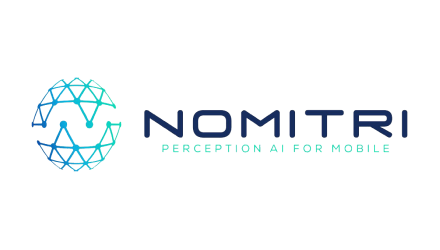By industry analysts, associations, and peers









Judge us by the companies we keep.




















Reverse engineering is a technique used to dissect and analyze the binary or executable code of an application to understand its inner workings. Often exploited by hackers, it involves processes like disassembling, debugging, and scanning using tools such as decompilers, disassemblers, and reverse engineering tools. This allows attackers to uncover proprietary algorithms, authentication processes, and other sensitive data.
For companies, reverse engineering exposes vulnerabilities in software and leads to risks such as the theft of intellectual property, loss of competitive advantage, and breaches of user data. Whether it’s analyzing bytecode or accessing machine-code, the danger lies in enabling malicious software like Trojans, viruses, and ransomware to compromise your application.
Today, organizations face serious consequences when an application is targeted by reverse engineering. Here are the main risks:

When source code, object-code, or proprietary algorithms are exposed through techniques such as disassembly or dumping, competitors or malicious actors can recreate unique features.
This often results in lost revenue and erosion of market differentiation. For innovative applications, whose code is the result of years of research and development, this type of theft is particularly damaging.
In sectors such as finance, healthcare, and e-commerce, applications handle sensitive user information. Reverse engineering can reveal personal data, allowing malicious software or phishing attacks to exploit these details.
Companies risk costly regulatory penalties under laws like GDPR and HIPAA, along with loss of customer trust.
Reverse engineering weakens authentication mechanisms by exposing control flow, enabling cybercriminals to impersonate legitimate users, manipulate transactions, and access backend systems.
This risk is particularly high for mobile applications and IoT devices relying on secure authentication processes.
Reverse engineering is not just a tool exploited by hackers; it can also be used by competitors to analyze your innovations.
By bypassing obfuscated code or circumventing copy protection, competitors can recreate your features, reducing your competitive advantage and weakening your brand.
Verimatrix XTD (Extended Threat Defense) offers a multi-layered security approach to protect your applications and prevent reverse engineering from compromising your business.

Verimatrix uses obfuscation to scramble the structure and logic of your code, making it nearly impossible for disassemblers or decompilers to analyze. This process safeguards intellectual property by frustrating attempts to disassemble or reverse-engineer your application.

The system actively detects unauthorized attempts to modify or reverse-engineer your application. It responds instantly by halting compromised applications, preserving user data integrity and preventing attacks like malware injection.

Verimatrix encrypts sensitive data within the application, securing it even when parts of the application are dumped or decompiled by attackers. This reduces the risks of data leakage and ensures the protection of endpoint data.

Verimatrix incorporates machine-learning-based behavioral analysis to identify suspicious activity, often linked to malware analysis. This proactive approach flags potential breaches before they cause harm.

Your source code represents years of innovation. Verimatrix prevents unauthorized access to machine-code, ensuring your R&D investments are protected from reverse engineering and competitive theft.
A breach from malicious software or reverse engineering can harm your brand’s reputation. Verimatrix strengthens your defenses, preserving customer trust.
Verimatrix’s security software ensures compliance with laws like GDPR and HIPAA, protecting user information and avoiding legal repercussions from breaches caused by reverse engineering.
Verimatrix XTD secures communication between applications and backend systems, ensuring only authenticated users can access sensitive information, and preventing exploits targeting authentication vulnerabilities.
Financial apps are prime targets for hackers due to the sensitive data they handle. Reverse engineering can expose authentication processes, enabling unauthorized transactions. Verimatrix encrypts critical components, preventing exploitation by attackers.
Entertainment platforms hosting premium content face threats from hacking and malware. Reverse engineering allows unauthorized users to bypass security software or circumvent payment barriers. Verimatrix protects copy-protected content and preserves revenue streams.
“We’re pleased to have turned to a security expert such as Verimatrix to provide the peace of mind that the code within our Mac and Windows applications is heavily protected against unauthorized use.”

CEO at Vochlea Music
“With multiple media apps to support deployed across millions of devices, we look forward to the benefits that Verimatrix’s enhanced security solutions will provide to our business.”

Video and Hubs Director at izzi
“Our payment solutions depend upon Verimatrix cybersecurity to help us continuously monitor the security posture of our mobile apps.”

CEO at Tidypay
“Working with retailers and quick commerce players, we know security is an important topic for our business. We’re pleased to work with Verimatrix XTD technologies.”

Co-Founder and CEO at Nomitri
“Verimatrix XTD offers us state-of-the-art technology to cater to our evolving security needs.”

Managing Director at GTPL Hathway Limited
“Verimatrix not only understands the unique needs of the media & entertainment space, but it is also a heavily trusted expert in both app protection and mobile threat defense – the perfect mix for our business.”

CTO at United Cloud
Reverse engineering is a growing threat to cybersecurity. Verimatrix XTD offers multi-layered protection to defend your critical assets, preserve your reputation, and maintain user trust.
By industry analysts, associations, and peers









Talk to a specialist about securing your
apps with Verimatrix XTD Protect.